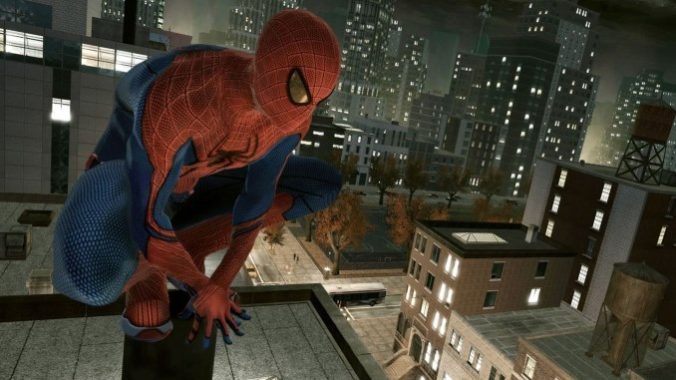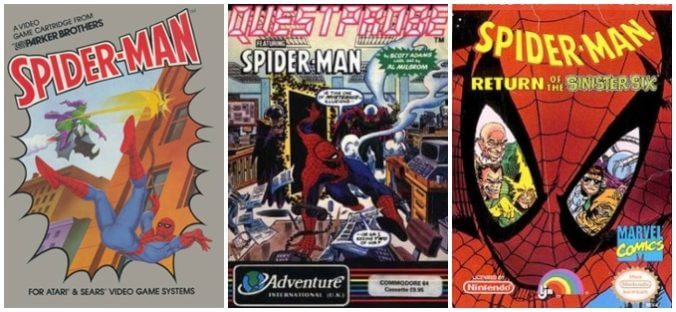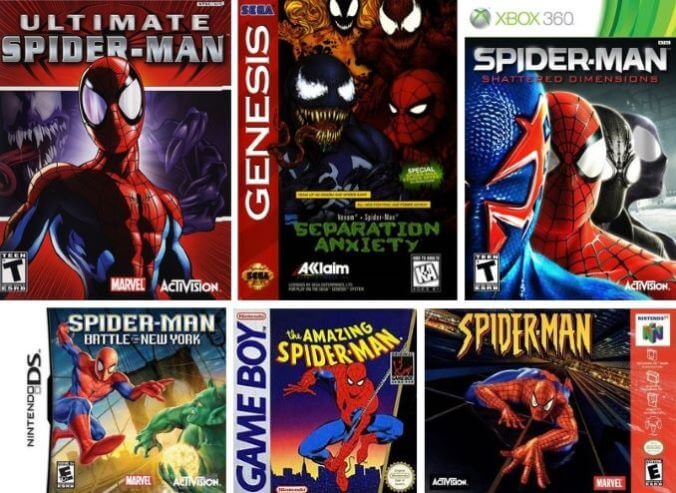The History of Spider-Man Games: From the Atari to Today

Sorry, Batman: Spider-Man is the best superhero. There are far more powerful ones with stories of greater scopes, but none of them have Spidey’s charm and relatability. A flip-performing, web-shooting high schooler who quips as much as he thwips? Who can beat that?
He’s also been an iconic character in the realm of videogames longer than the Mario Bros. have been Super. In celebration of this month’s rapturously received 2023 Spider-Man 2, let’s take a look back at the 41 years we’ve gotten to play as New York City’s very own webslinging hero.
We won’t get to every webhead game here, but we’ll instead highlight the most noteworthy installments. We’re also only covering games specifically starring the character (any version of him), so games only featuring him as part of an ensemble cast like Marvel’s Midnight Suns or Marvel Snap aren’t within the scope of this article.
The first-ever Spidey game came out in 1982, a year before the original Mario Bros., for the Atari 2600 and Odyssey 2. In the extremely primitive game, simply titled Spider-Man, you control the titular character by swinging and climbing up and down a building the Green Goblin is trying to bomb. That’s pretty much it, from what I can glean.
His second notable game appearance came in the 1984 computer adventure game Questprobe: Featuring Spider-Man. This was the second of three games in the Questprobe series, which was cancelled early due to the bankruptcy of its developers, Adventure International. Don’t expect to do much webslinging, at least in the way you might expect; this is a true “adventure game” in the early ’80s computer sense of the term, meaning it’s basically an interactive story that you “play” by typing words and terms into a text parser. It did feature cameos from other comic book characters, though, and veteran Marvel Comics artist, writer and editor Al Milgrom worked on it, too.
In the Amazing Spider-Man trilogy, released from 1990 to 1993 for the Game Boy, with the original one hitting non-Nintendo consoles of its time as well, Spidey not only has to use his muscles, but his brain as well. Notably, the first entry for the Game Boy was developed by Rare, with the second and third entries being made by Bits Studios.
Bits Studios was busy making webslinger games, it turns out, as they also developed Spider-Man: Return of the Sinister Six for the NES, Master System and Game Gear in 1992. It was a pretty straightforward side-scrolling action game.

Software Creations also added a few games to the canon in the ‘90s, including Spider-Man and the X-Men in Arcade’s Revenge for the SNES, Genesis, Game Gear and Game Boy in 1992, Spider-Man and Venom: Maximum Carnage for the SNES and Genesis in 1994 and Venom/Spider-Man: Separation Anxiety for the SNES and Genesis in 1995. All three were also beat-’em-up sidescrollers, which seemed to be popular at the time! (Or at least fairly quick and easy to churn out.—Ed.)
Ringing in the new millennium with the first 3D Spidey game was 2000’s Spider-Man, developed by Neversoft for the PlayStation and a whole bunch of other developers for every other popular platform at the time. The game was well received for its creative level design and boss fights, and received similarly popular sequels in the forms of Spider-Man 2: The Sinister Six for the Game Boy Color, Spider-Man 2: Enter Electro for the PlayStation and Spider-Man: Mysterio’s Menace for the Game Boy Advance, all released in 2001.
The year 2002 saw another game simply titled Spider-Man, this time based on the movie of the same name from the same year, featuring some of the same cast members returning to voice their characters. This one was similarly level-based like the PlayStation games made before it, but its two sequels based on the film sequels, 2004’s Spider-Man 2 and 2007’s Spider-Man 3, were some of the first in the franchise to have open-world exploration of New York City. You could see the influence of GTA seeping into how these games were designed.
